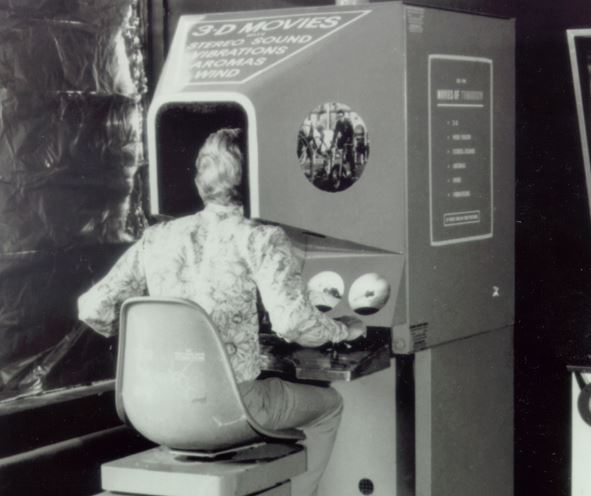
VR holds a coveted position as a top tech trend frontrunner alongside the likes of swift opponents AI and blockchain, with a host of disruptive use cases planned for the near future.
Excitement surrounding VR is building rapidly, with use cases for business and even healthcare coming to light, but the storm of current excitement does not mean VR is without a long and complex history.
Previously CBR has plumbed the fathoms of human history in search of the root of other technologies, such as AI, and we found that people in ancient times dreamt of animated statues, a glimpse of what humanity has achieved today.
The journey toward VR began with a will to synthetically convey the feeling and experience of a situation the viewer could not comprehend unaided, and at the beginning of the 19th century, the first attempts to create such an experience were made.
Paintings
War has been fundamental to human history, critical events providing immense spectacles. It was the spectacle of war and it’s magnitude that first prompted an attempt to recreate an event for a spectator in another place and time.
Panoramic paintings emerged in the 19th century, with the style commonly used to synthesise the experience of overlooking or being in the midst of a battle. The concept is to fill the view of the person looking at the painting right to the peripherals, attempting to immerse the person in the experience.

An example of this is the Racławice Panorama, this is a cycloramic painting that attempts to create a sense of reality for the viewer when looking at the interpretation of the Battle of Racławice. The viewer must position themselves at the centre of the circular artwork, with lighting, effects and perspective to enhance the experience.
Virtual tourism
While this experience is far removed from the virtual tourism that is possible today, it marked a major stride forwards in terms of the application of technology in the creating a virtual reality experience.
In 1838, Charles Wheatstone worked on the basis that each eye plays a different part in processing three dimensional images. He began placing two images side by side, working with the brain to give the sense of being inside the image.
Sacred statues and board games: The history of AI
From Magicians to Bletchley Park: The History of Hacking
5 major milestones in the history of Instagram
The premise developed by Wheatstone is still relevant today, and proved extremely popular at the time. It was so effective that it became used for virtual tourism, providing the viewer with a sense of what a destination would be like to visit.
Pygmalion’s Spectacles
While our previous examples are a pleasant snapshot of the build up to creating synthetic experiences of reality, this one is perhaps an integral building block in what virtual reality has become today.
Stanley G. Weinbaum, author of Pygmalion’s Spectacles in 1935, quite accurately imagines a wearable device transporting the wearer to an alternate, virtual reality. The experience in the story involves holographic recordings that incorporate other human senses.
The work also questions what reality is itself, a philosophical question we may have to face the further we venture into the world of virtual reality.
The Sensorama
Cinematographer, Morton Heilig, described a theory he had in the 1950s for a device

within which the senses could be stimulated, creating a synthetic reality. He referred to this device he had imagined as an “Experience Theatre.”
In the early 1960s, long before computing as we know it, Heilig created a machine capable of playing short films that incorporated touch, sound and scent, in addition to full peripheral view. These contributing features were also enhanced by the films being in colour, with the images displayed as three dimensional.
The Sensorama is a mountainous landmark in the history of virtual reality, as it is a leap from mere theory and non-technological approaches to giving a sense of reality. Through the use of Heilig’s device the user could be completely immersed in an actual experience that was no reliant on imagination.
Head Mounted Display
The 1960s were important years for virtual reality innovation, because not long after the arrival of the Sensorama, the first head-mounted VR device came into existence.
Advances in the 1960s included a head-mounted display capable of motion tracking; this was designed and created by two Philco Corporation engineers. While this was important, it is another device that stands out in the decade.
Sensorama was ground-breaking, but it was large, static, and the user was required to be seated and enclosed. Ivan Sutherland was behind the first head-mounted device, and it gained the name The Sword of Damocles, and its appearance is highly comparable to even the most advanced devices today.

The Sword of Damocles is not only a major piece of VR history due to its design, it was also the first VR device to be connected to a computer.
Despite looking so futuristic, the Sword of Damocles was too heavy to allow the freedom of movement you would expect from a head-mounted device. It was so heavy in fact that it had to be suspended from above to take the weight. The experiences themselves were also limited, simply involving models of rooms.
Gaming
Today VR is perhaps best well known for its association with video games, and this has been the case for some time, with major progress in this space emerging through devices created for gaming from the 1970s.
This wave of progress began with the Aspen Movie Map, a 1978 innovation that came out of MIT that allowed the user to explore Colorado in either summer or winter. Atari showed interest in furthering VR technology in 1982 when it opened a lab for the purpose of research.
 It was in the 1990s that the next stage of VR development began, as devices became commercially available on a wide scale. Another big name in gaming history, Sega became involved, releasing the Sega VR device for console and arcade gaming options.
It was in the 1990s that the next stage of VR development began, as devices became commercially available on a wide scale. Another big name in gaming history, Sega became involved, releasing the Sega VR device for console and arcade gaming options.
The Oculus Rift device that arrived in 2010 was arguably the next most significant driver of VR excitement, offering rotational tracking and a 90 degree field of vision. It has paved the way towards the world we live in today that is much more familiar with VR.
The future
Gaming continues to be among the most prominent use cases for virtual reality, offering remarkable experiences and change in a space that has left the user detached from the screen for a number of decades.
However, we may be on the brink of the most exciting period in VR’s lifetime, as the technology has become formidable enough that use cases in many important, real world areas are being considered widely.
Healthcare is a central area, for example, the technology could be used in the training of surgeons, a vital skill that understandably cannot easily be taught through first-hand experience. Military use for VR is also being considered, and in this instance it could be very valuable for training purposes that cannot be simulated in a risk free manner otherwise. VR could also be provided for jurors in a court of law, helping to best inform their decisions with complex, realistic recreations.






